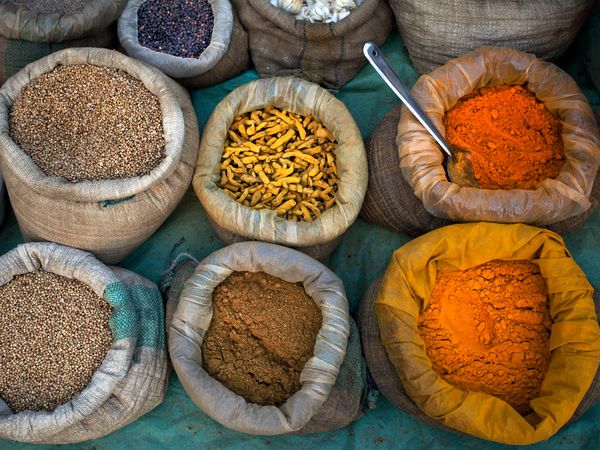NATIONAL GEOGRAPHIC Daily News | Ker Than for National Geographic | Published August 23, 2013
Prehistoric Europeans cooked with peppery garlic mustard seeds, study finds.

Ancient European hunter-gatherers were using garlic mustard seeds to give their foods a peppery kick as far back as 6,000 years ago.
Researchers have found evidence for garlic mustard seeds in cooking residues left on ancient pottery shards discovered in what is now Denmark and Germany.
The finding, published this week in the journal PLOS One, is the oldest evidence of spices being used for culinary purposes, said study co-author Oliver Craig, an archeologist at the University of York in the UK.
“We think it was mixed with other ingredients in a pot, so it was actually used to deliberately spice other foods,” Craig said.
Craig and his team found microscopic specks of plant-based silica, known as phytoliths, on fire-scorched pottery shards collected from three campsites in north central Europe that ranged between 5,800 and 6,150 years old.
The team identified the seeds as belonging to the garlic mustard plant, also known as Jack-by-the-hedge. The tiny black seeds from this plant have no nutritional value, but are known for their pungent, peppery taste.
Along with the garlic mustard phytoliths, the team also found remnants of fish and animal fat—probably deer—on the pottery shards, which suggests prehistoric cooks were using the spice to flavor these foods.
What’s New?
Older examples of spices in the archaeological record are known, Craig says, but none have been so clearly linked to cooking as in this case.
“When archaeobotanist find plant remains in archaeological deposits, it’s quite difficult sometimes for them to determine whether they were naturally occurring in the environment or if they were being used deliberately,” Craig said.
“What we’ve got is absolutely secure evidence that these [European hunter-gatherers] were taking these plant products and putting them into a pot and cooking with them.”
Because some of the clay pots found at the sites were large and fragile, archaeologists doubt the European hunter-gatherers hauled them around while traveling.
More likely, Craig said, they had caches of cooking pots stored at different points along their route that they used at different times of the year.
Why Is It Important?
The new findings challenge the idea that ancient hunter-gatherers chose foods primarily to fulfill their caloric needs, since garlic mustard seeds have essentially zero nutritional value, Craig said.
“This is really showing us that they’re not just exploiting food for energy,” he added. “They’re also looking for foods that have got other types of qualities, whether that be medicinal or aesthetic qualities such as taste.”
What Does This Mean?
Craig and his team think the hunter-gatherers used garlic mustard to spice their foods only occasionally, when the plant was in bloom.
“[We think] they were making use of the spice as it came into season,” Craig said.
The team thinks European hunter-gatherers might have used other spices as well, but proving that could be difficult.
“The evidence we used looks at phytoliths, which are present in most plants but not always in high concentrations,” Craig said. “So a lot of spices we wouldn’t necessarily be able to detect in the archeological record [using this technique].”
What’s Next?
Craig says his team has plans to examine pottery shards from other parts of the world.
“We’re very interested in looking at other pottery residues to see why people began inventing pottery in the first place,” he said, “and more broadly, why hunter-gatherers were using pottery.”









